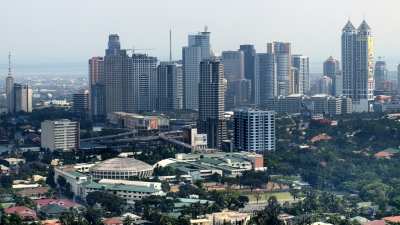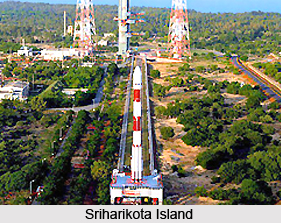 The Philippines is an island nation in South East Asia. It lies in the Pacific Ocean, near the equator, and is made up of around 7641 islands. The Philippines are a part of the Pacific Ring of Fire, which means it has many active volcanoes. It is also prone to earthquakes and typhoons.
The Philippines is an island nation in South East Asia. It lies in the Pacific Ocean, near the equator, and is made up of around 7641 islands. The Philippines are a part of the Pacific Ring of Fire, which means it has many active volcanoes. It is also prone to earthquakes and typhoons.
At the same time, these islands are blessed with abundant natural resources. There are beautiful beaches and coastal areas, as well as towering mountains and lush valleys.
The Philippines has a rich and varied wildlife, and the highest rate of discovery of new animal species. Sixteen new species of mammals have been discovered just in the last 10 years.
Interestingly, there are between 120 and 175 individual languages spoken in the Philippines, 171 of which are living, while the other four no longer have any known speakers.




 The Lakshadweep is an archipelago of islands that lie in the Arabian Sea, off the coast of Kerala. The archipelago forms the smallest among the union territories of India.
The Lakshadweep is an archipelago of islands that lie in the Arabian Sea, off the coast of Kerala. The archipelago forms the smallest among the union territories of India.
 Sriharikota is a barrier island. It lies in the Bay of Bengal, off the coast of Andhra Pradesh. Sriharikota is of tactical importance to India, as it is an ideal launch site for geostationary satellites.
Sriharikota is a barrier island. It lies in the Bay of Bengal, off the coast of Andhra Pradesh. Sriharikota is of tactical importance to India, as it is an ideal launch site for geostationary satellites. Willingdon Island, which is part of the city of Kochi in Kerala, is the largest man-made island in India. The island was created from the sand dug out while deepening Kochi port. It was built around a previously existing but tiny Natural Island.
Willingdon Island, which is part of the city of Kochi in Kerala, is the largest man-made island in India. The island was created from the sand dug out while deepening Kochi port. It was built around a previously existing but tiny Natural Island.


 Pamban Island, also known as Rameswaram Island, is an island located between India and Sri Lanka. The island is famous for Rameswaram, which is a pilgrimage destination.
Pamban Island, also known as Rameswaram Island, is an island located between India and Sri Lanka. The island is famous for Rameswaram, which is a pilgrimage destination.

 Divar Island lies in the Mandovi River about 10 kilometres upriver from the capital of Goa, Panjim. The name Divar has evolved from the word ‘dipavati’ which means ‘Small Island’ in Konkani. This beautiful little island is a serene and seldom visited place that retains the old world charm of rural Goa.
Divar Island lies in the Mandovi River about 10 kilometres upriver from the capital of Goa, Panjim. The name Divar has evolved from the word ‘dipavati’ which means ‘Small Island’ in Konkani. This beautiful little island is a serene and seldom visited place that retains the old world charm of rural Goa.


 Elephanta Island lies east of the city of Mumbai in Maharashtra. It is also known as Gharapuri, which means ‘place of caves.’ Elephanta Island is indeed famous for its caves. These caves have been carved out of rock, and the rock-cut temple complex covers an area of 5574 square metres. It consists of a main chamber, two lateral chambers, courtyards, and subsidiary shrines.
Elephanta Island lies east of the city of Mumbai in Maharashtra. It is also known as Gharapuri, which means ‘place of caves.’ Elephanta Island is indeed famous for its caves. These caves have been carved out of rock, and the rock-cut temple complex covers an area of 5574 square metres. It consists of a main chamber, two lateral chambers, courtyards, and subsidiary shrines. Indian islands in that it has the feel of Portugal on Indian Territory. In fact, Diu was a Portuguese colony till 1961, and the Portuguese touch can be seen everywhere- in the architecture, especially the monuments and churches, in the people and their cuisine, in the language and culture.
Indian islands in that it has the feel of Portugal on Indian Territory. In fact, Diu was a Portuguese colony till 1961, and the Portuguese touch can be seen everywhere- in the architecture, especially the monuments and churches, in the people and their cuisine, in the language and culture.
